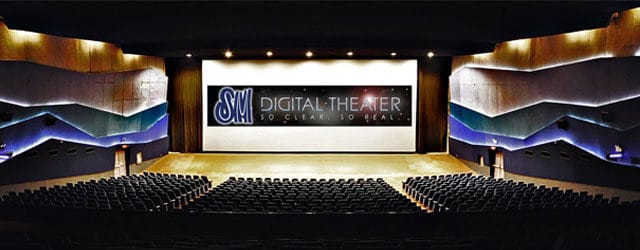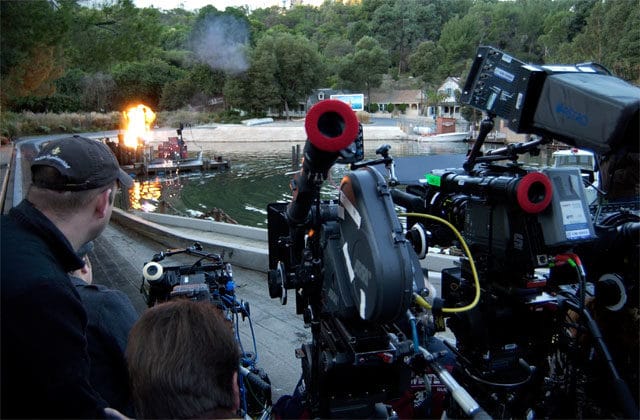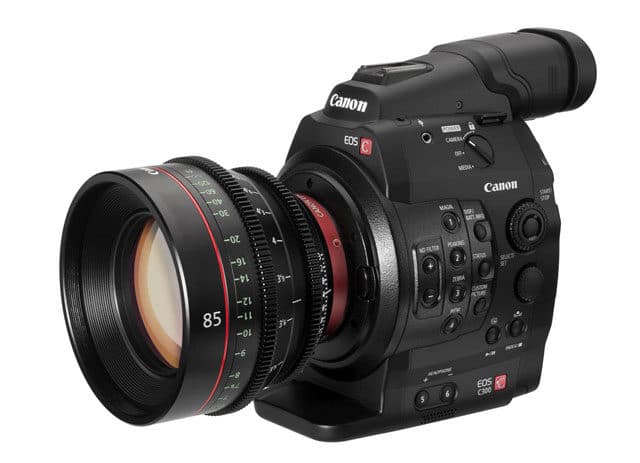Cinema Industry is rapidly developing both technologically and conceptually in past few decades. Story writers came up with unbelievable stories, and then directors made them possible in Celluloid film. Sometime after 3D graphic designers made lots of impossible dreams possible with virtual reality characters and backgrounds. Especially in scientific fictions and action moves were empowered with lots of technologies and concepts.
Latest move post production is totally based on Digital based technologies. Digital era evolve the SLR camera to DSLR. Yet moves are recorded in analog celluloid films. Due to that there were lots of technical difficulties faced in post production face. Top of all there were no replacement to Celluloid film with digital recording technologies due to their low resolution video frames. However, in that past few years digital cinema cameras are been introduce which give us hope of total digital cinema production.

Existing Technology
Existing technology used to record a movie is Celluloid film. It is very similar to the film that we used in SLR cameras before DSLR camera comes. It’s like taking 24 still pictures in SLR camera and plays them as a film. In Cine camera celluloid film is running inside it, and there is a lens system to focus light in to that. The speed of running on celluloid film decided the frame rate of the video. The frames in the video get burnt in to celluloid film and then it need to be developed chemically. If the director needs some special color correction that need to be done chemically.
In editing, it will be linear editing. In very early stage, editors used to cut off the part of film and re-join them to get the edited movie. Later there were special editing stations to do non linear editing for celluloid films. In the case they need a 3D object in the film. They have to transfer the frame in to new celluloid film with the 3D object in it. Later mixing stations were capable of work with a computer and control entire procedure through that. This made the life easier when producing virtual reality moves using computer technologies.
In the early stage of cinema, they were using a very basic version of celluloid film. So moves were in black and white. Later the chemical that were using in the f celluloid film were improved gradually, so movies go better colors. Today they are capable of capturing the color in front of the camera as it is. With the improvement of the less kit and cinema rigs, in collaboration of all directors could come up with exceptional moves that we see today in theaters.

Advantages
The reason why movie producers are still using this technology is, it the only option to display and movie in large cinema screen. Celluloid films are having unlimited number of pixels theoretically. If you have good optics, you can expand the frame in to any larger screen. In theater this celluloid film fill will be developed as a “positive” which contain video frames in transparent film and it will be run in the given speed in projector with the aid of optical system to zoom it in to standard cine screen. And latest celluloid films are capable of capturing very accurate colors. Due to that some video producers are using celluloid film even to record videos prepared for television broadcasting.
Disadvantages
No matter how quality is the video celluloid films are having lots of problems. Most of the problems are there in SLR cameras and here it’s even worse. Mainly the cost, cost for celluloid film and cost of complex cameras are way higher to afford. Due to that to produce a cinema there is a huge cost barrier. And the cameras are huge and very less portable. If something goes wrong, you have no way to delete it. All the frames that captured are irreversibly burnt in to celluloid film. In such a case you have to throw the film away. In the post production phase you need very complex instruments to get the editing done. If you need to include partial virtual reality world in your movie its even difficult and take very longer time to finalize or render.
How about 1080p HD videos?
Now you must be wondering, “Why can’t we use full HD videos in Theaters?”. Yes 1080p HD videos are very common today with Blu-ray disks and people are watching them in big Plasma screens or projectors. 1080p videos are having the frame size of 1920 x 1080 which is very big for most of the home theater system we use. But when you take the same video in to theater the video resolution is way not enough. It will be blurred in the screen and you will realize that video need more details means more resolution. But do we have such cameras to capture such videos. Never seen in general production environments, but they are out there.
Digital Cinema Standards
The cinema industry was so badly demanding a digital cinema camera for years. Therefore various different standards were introduced to develop such a camera by various people. When it comes to HD video there were standards like 720p, 1080i and 1080p. Same sort of standards for screen resolution were introduced to digital cinema as well. So camera manufactures will have to comply with them.
2K Videos
It’s having 2048×1080 resolution video frames. Normally used in 24 fps yet you can choose to use in 48 fps as well, if you are using background tracking. This is a good resolution to display in cine screen, yet most of the people are still reluctant with the detail level.
4K Videos
It’s having 4096×2160 resolution in video frame and very good detail level to display in digital theaters. Frame rate is same as 2K. Most probably this will be the standard for future digital cinema.
8K Videos
It’s having 8192 × 4320 resolution in video frames. They could be use to video capturing to get the maximum amount of details for post production. Yet final product will be redder as 4K.
Advantages of Digital Cinema
Digital cinema solved many problems which were there in celluloid film technology. The main factor is cost. Initial investment could be higher for equipments yet cost for video shoot will be much lesser as long as they will be stored in reusable digital storage. Cameras will be less complex and smaller equipments with much portability. In the case something goes wrong you can easily delete it and re shoot it. In post production the editor can use all the non liner editing techniques to come up with exceptional video. Most of the latest movies are having virtual reality technologies included and those will be much easier why video also in digital format. Further, if you need to do a advanced color correction it also will be much easier and less costly.
Digital Cinema Cameras
Red Camera
The most discussed digital cinema camera is Red camera. There is a range of cameras with different capabilities. The very first one camera they released is Red One. This camera attracted massive public attention which was capable of recording 2K videos. Lots of people were inspired and started doing research on possibilities of digital cinema. Lots of theaters were looking forward to upgrade their conventional projector to digital projector.
In 2011 they released the camera Epic which is again capable of capturing video in 4K format and 5K format as well. The camera comes as different version like brain only (only the processor), Epic-M Pack and total package. This is excellent choice for any kind of commercial digital cinematography.
In late 2011 they are planning to release another camera good for small scale digital cinematography named Scarlet. It comes with an affordable and good set of features as well. Most attractive thing in there is some version of Scarlet support Canon lenses. This will be a good news for the people who already doing digital cinematography using Canon DSLRs.
There are lots of Movies, commercial and music videos done using red cameras. Below video shows some of those.
Canon EOS C300
With the start of digital cinema era Canon also decided to come in to the market with a camera called EOS C300 which is capable of 4K video capturing. There were lots of cinematographers who are using Canon DSLR cameras for their production. This will be good upgrade for them since they can use their existing lens kits. And I believe this will be a good competition to Red camera as well.

Future
SLR to DSLR
Sometimes ago most of the professional photographers were using analog SLR cameras for their photography. Once the Digital SLR camera comes and they improve up to Full frame camera most of the professionals started using DSLRs for they work. Today it’s very rare to find a professional photographer still using a SLR. It’s true that there is a data loss when we convert the continuous data stream like light in to discreet data system like Digital. But most of the cases human eye is not capable if identifying it with the latest digital advancement. And considering many other factors like ease of use, cost, fatly tolerance and digital post processing professional have been shifted to DSLRs.
Digital Cinema Possibilities
In cinema industry large part of the movies are still producing with celluloid film because digital technology was not developed to not to make feel difference to human eye. But with this advancement of digital cinema cameras and their 2K and 4K video formats, future movie producers will start using digital cine cameras more. Even now most of the forthcoming massive movie productions are doing using digital cameras, especially Red Camera Epic.
Post production
Importantly there won’t be much effort to improve the post production environment since they are up to standard already. All they need is very powerful computer to handle high resolution videos and relevant software. If talk about software they are more than advanced today to get any classy work done. Most of the productions housed are using clusters of computer to get more processing power for editing and rendering. If it’s still not enough they can easily get a online cloud cluster or rendering farm.
Digital Theaters
At the same time theaters also need to be equipped with the latest digital projectors. Their initial cost of way bigger than previous film projectors, yet with that investment they will be able to deliver amazing movie experience to the audience.
Tags: #Cinema
